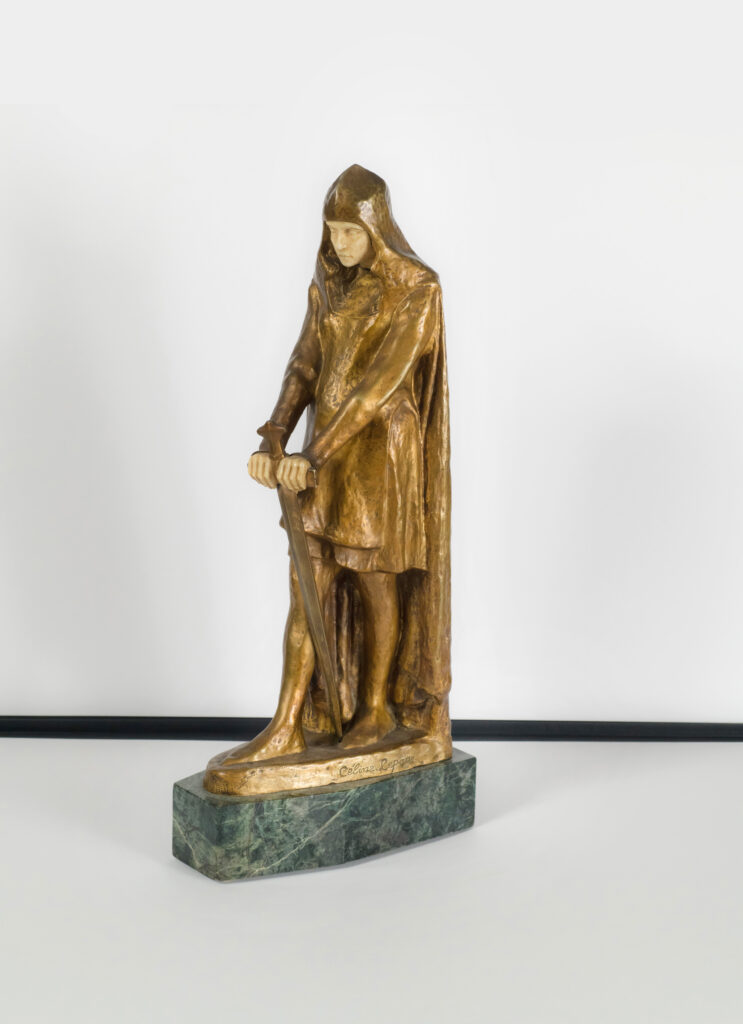Your currently viewing RAW Modern | Switch to RAW Contemporary
Jeanne d'Arc, Circa 1921
Catalogue essay by Blanche Llewellyn
Céline Lepage, born in 1882 in Warsaw, was a French sculptor. Her education, career trajectory and personal history remain elusive, mirroring the mystery surrounding her artworks, as little is known or has been studied.
From 1905 onwards, Lepage exhibited her works at the Salon of the Société Nationale des Beaux-Arts in Paris to great acclaim. In his book, Sculpture of today (1921) the art historian William Kineton Parkes placed Lepage among “The number of women sculptors who belong to the modern school”. Upon her return to Paris, she exhibited four sculptures at the Salon d’Automne in 1919 and then at the Salon des Tuileries in 1923. These exhibitions afforded her the opportunity to participate in decorating the Pavillon de Pomone, the art workshops of Le Bon Marché under the direction of Paul Follot. In an article in the Chronique des Arts et de la Curiosité of the Beaux Arts ( 29 May 1934), it was noted, “The doors she executed for the pavilion of ‘Le Bon Marché’ at the 1925 Exposition des Arts Décoratifs were highly remarked upon. However, this success was not enough to satisfy a temperament like that of Céline Lepage, who aimed much higher and considered that in sculpture, “the more one advances, the more one progresses, and the more the work becomes difficult.”Married to an officer, she traveled abroad from 1909 to 1912, particularly to Tunisia and Morocco, countries that inspired her later creations.
Céline Lepage is widely recognized for her sculpture “La Femme voilée de Marrakech,” (1920s) featuring a powerful female figure crafted in bronze. This artwork draws parallels to her depiction of Joan of Arc, showcasing women’s heroism.
Joan of Arc was a significant figure in 15th-century French history for claiming divine visions guiding her to save France and the reign of Charles VII at Reims during the Hundred Years’ War.
Céline Lepage portrayed Joan of Arc in chryselephantine—a technique blending gold and ivory – highly esteemed in ancient Greece and often used to represent deities and significant religious figures. This choice not only aligns with Jeanne d’Arc’s symbolism but also elevates her to a divine status, emphasising the significance of the medium over Lepage’s usual preference for bronze. Thus, the sculpture embodies themes of courage, and faith, symbolizing bravery, devotion, and nationalism. The depiction of Jeanne wielding a sword accentuates her revered status, akin to a deity.
